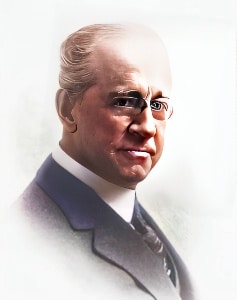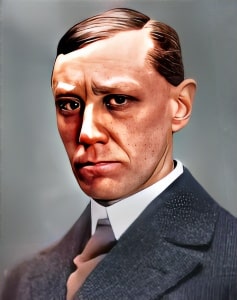 William H. Crane, a renowned American actor, was born on April 30, 1845, in Leicester, Massachusetts.
William H. Crane, a renowned American actor, was born on April 30, 1845, in Leicester, Massachusetts.
His career in the world of entertainment spanned several decades, making a significant impact on the American theater scene. With versatile performances and an exceptional stage presence, he left an indelible mark on the theater world.
Crane’s journey into the world of entertainment began during a time when live theater was the dominant form of public amusement. Starting as a teenager, he ventured into various productions and quickly gained recognition as a promising actor. His talent was evident from his early years.
A pivotal moment in William H. Crane’s career came when he established himself as a successful leading man in the late 19th century. His ability to take on a wide range of roles made him a sought-after actor in the theater world. Crane excelled in both dramatic and comedic roles, showcasing his adaptability and emotional range.
One of Crane’s most celebrated roles was that of David Harum, a character he first portrayed on stage in 1898. The play “David Harum,” adapted from Edward Noyes Westcott’s popular novel, became a sensation. Crane’s performance as the shrewd and folksy horse trader garnered critical acclaim and endeared him to audiences. He continued to perform this role for many years, touring across the United States, and becoming synonymous with the character.
Crane’s impact on American theater was not confined to a single role. He excelled in various productions, both in dramatic plays and comedies. His ability to convey complex emotions and connect with audiences through his performances set him apart as one of the leading actors of his time.
As the theater scene evolved and cinema emerged as a new form of entertainment in the early 20th century, Crane’s extensive experience and stage presence made him a valuable asset in the transition to film. He appeared in several silent films during the 1910s, demonstrating his versatility as an actor and adapting to the changing times.
One notable film in which William H. Crane appeared is “ The Saphead.” Released in 1920, “ The Saphead” marked a significant moment in Crane’s career as he transitioned from the stage to the screen. The film is a silent comedy-drama and represented a turning point for Buster Keaton, who was making the transition from a supporting player to a leading actor. Crane played the role of Mr. Harrington, a stern and disapproving father, in this iconic film. “ The Saphead” is a classic example of silent film comedy, showcasing Keaton’s unique talent for physical comedy and clever gags.
Crane’s legacy extended beyond his stage and screen performances. He was admired for his contributions to the theater community and his dedication to his craft. His ability to adapt to changing times and continue to engage audiences throughout his career is a testament to his talent and commitment.
In conclusion, William H. Crane was a prominent American actor who left an indelible mark on the American theater scene during the late 19th and early 20th centuries. His exceptional versatility, ability to connect with audiences, and memorable performances made him a celebrated figure in the world of entertainment. While his name may not be as widely recognized today, his legacy as a versatile and accomplished actor endures as an integral part of the history of American theater. William H. Crane’s contributions to the stage and screen continue to inspire future generations of actors and remain a valuable part of the rich tapestry of American performing arts.
Loading live eBay listings...




